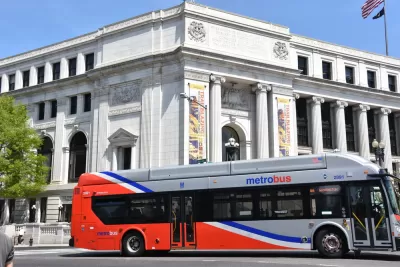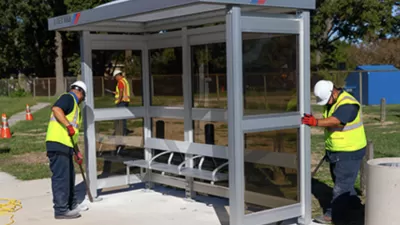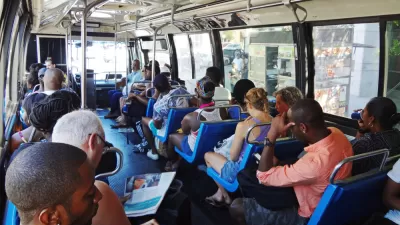Bus ridership is down in the nation's capital. Some see the issue as an opportunity to better design the service to make dollars go further.

Some officials hope to borrow lessons from Houston's redesign of its bus service to try to turn around falling ridership numbers. "It’s a strategy that is being pushed by the Washington region’s leaders, eager to see Metro seize opportunities to save money and 'right-size' service — essentially, to eliminate buses that consistently fail to run at capacity. A bus network overhaul was among the ideas recommended by former U.S. Transportation Secretary, Ray LaHood, in his recently released report on how to fix Metro’s structural and financial problems," Martine Powers writes for the Washington Post.
Why buses in D.C. are losing riders is a subject of debate, some say that now-completed train projects make that service more attractive, others point to lifestyle changes taking more people away for 9-to-5 schedules that the system was built around, and the growth of bike-share and ride-share are likely part of the equation as well.
In Houston, "officials focused on providing more frequent service throughout the day rather than clustering their efforts around the morning and evening peak periods," Powers writes. The system also moved away from a hub-and-spoke system to a grid system. "The effects on ridership are heartening: in the first year after the redesign, Saturday ridership increased by 15 percent, and Sunday service was even more popular." But some paint a less rosy picture of Houston's update, arguing that the city sacrificed equity when it cut service to areas with less ridership, which were often poor and minority.
The Houston bus redesign didn't end up saving the city money, but backers argue that boosting ridership on buses is a lot cheaper than adding transit services by any other means. They contend that, while costs went up, those dollars go further when they're spent on bus transit.

Study: Maui’s Plan to Convert Vacation Rentals to Long-Term Housing Could Cause Nearly $1 Billion Economic Loss
The plan would reduce visitor accommodation by 25,% resulting in 1,900 jobs lost.

Alabama: Trump Terminates Settlements for Black Communities Harmed By Raw Sewage
Trump deemed the landmark civil rights agreement “illegal DEI and environmental justice policy.”

Why Should We Subsidize Public Transportation?
Many public transit agencies face financial stress due to rising costs, declining fare revenue, and declining subsidies. Transit advocates must provide a strong business case for increasing public transit funding.

Paris Bike Boom Leads to Steep Drop in Air Pollution
The French city’s air quality has improved dramatically in the past 20 years, coinciding with a growth in cycling.

Why Housing Costs More to Build in California Than in Texas
Hard costs like labor and materials combined with ‘soft’ costs such as permitting make building in the San Francisco Bay Area almost three times as costly as in Texas cities.

San Diego County Sees a Rise in Urban Coyotes
San Diego County experiences a rise in urban coyotes, as sightings become prevalent throughout its urban neighbourhoods and surrounding areas.
Urban Design for Planners 1: Software Tools
This six-course series explores essential urban design concepts using open source software and equips planners with the tools they need to participate fully in the urban design process.
Planning for Universal Design
Learn the tools for implementing Universal Design in planning regulations.
Smith Gee Studio
Alamo Area Metropolitan Planning Organization
City of Santa Clarita
Institute for Housing and Urban Development Studies (IHS)
City of Grandview
Harvard GSD Executive Education
Toledo-Lucas County Plan Commissions
Salt Lake City
NYU Wagner Graduate School of Public Service




























